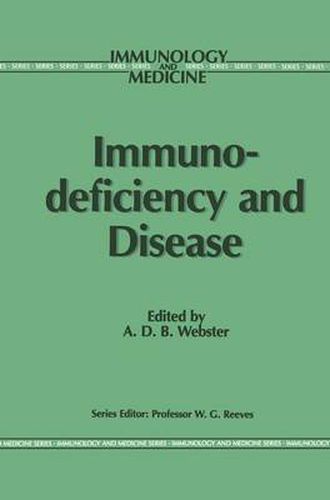Readings Newsletter
Become a Readings Member to make your shopping experience even easier.
Sign in or sign up for free!
You’re not far away from qualifying for FREE standard shipping within Australia
You’ve qualified for FREE standard shipping within Australia
The cart is loading…






The AIDS epidemic has popularized immune deficiency and has led to a rapid increase in the funding for research into the effect of viruses on immunity. There is now a real possibility of finding out whether some of the rare, so-called ‘primary’ immunodeficiency syndromes of children and adults, first described in the 1950s, may have a viral aetiology. Most of these syndromes have already been extensively reviewed more than once over the past 10 years, and their diagnosis and management is now included in most standard medical textbooks. In this volume, I have chosen to highlight what I consider to be the potentially exciting aspects of immunodeficiency in humans, hopefully providing clinicians and medical academics with some insight into the recent breakthroughs and disappointments. There are three chapters discussing viral interactions with the immune system. Although much has been written about AIDS already, I make no apology for including an extensive review of both the clinical and laboratory aspects of this disease. AIDS is an important precedent, and it is likely that other less pathogenic retroviruses will eventually turn dut to cause some of the rarer immunodeficiency disorders in children and adults. For instance, it has long been suspected that viruses may cause some of the non-familial types of severe combined immunodeficiency in infants; in fact HIV-I infection now has to be considered in the differential diagnosis.
$9.00 standard shipping within Australia
FREE standard shipping within Australia for orders over $100.00
Express & International shipping calculated at checkout
The AIDS epidemic has popularized immune deficiency and has led to a rapid increase in the funding for research into the effect of viruses on immunity. There is now a real possibility of finding out whether some of the rare, so-called ‘primary’ immunodeficiency syndromes of children and adults, first described in the 1950s, may have a viral aetiology. Most of these syndromes have already been extensively reviewed more than once over the past 10 years, and their diagnosis and management is now included in most standard medical textbooks. In this volume, I have chosen to highlight what I consider to be the potentially exciting aspects of immunodeficiency in humans, hopefully providing clinicians and medical academics with some insight into the recent breakthroughs and disappointments. There are three chapters discussing viral interactions with the immune system. Although much has been written about AIDS already, I make no apology for including an extensive review of both the clinical and laboratory aspects of this disease. AIDS is an important precedent, and it is likely that other less pathogenic retroviruses will eventually turn dut to cause some of the rarer immunodeficiency disorders in children and adults. For instance, it has long been suspected that viruses may cause some of the non-familial types of severe combined immunodeficiency in infants; in fact HIV-I infection now has to be considered in the differential diagnosis.